PILLAR FOUR
Place
Connection to the land and a particular place can be a form of healing. Place/Country provides all the tools required in life. It is sacred, alive, and our kin. It is about being one in a space that allows you to open the senses and be present in the moment. Deeply listening and observing the natural world can ground the spirit and ease the mind.
Background: Sunrise over Naarm. Image by Irihipeti Waretini
Amos Roach is a proud Gunditj Mara / Ngarrindjeri man.
On a sweltering summer’s day, Amos sat in the shade of a rock shelter on a beautiful mountain in Gariwerd and played a Yidaki meditation.
“It’s healing for men, for ourselves, it’s healing for women, the sound, because it has healing properties. So, it’s healing for everyone.”
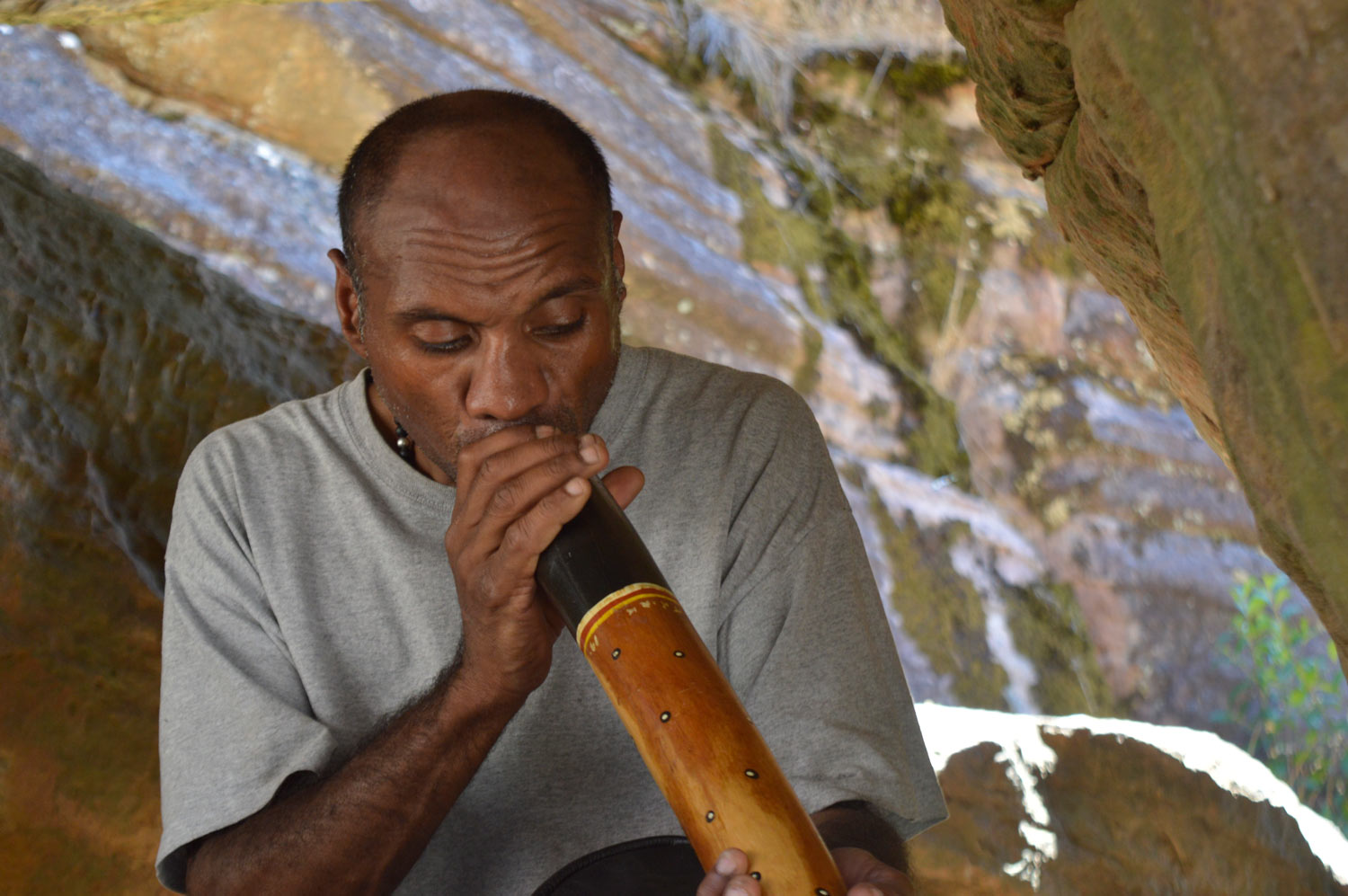
Amos Roach sits in the shade of a rock shelter playing the Yidaki, or Didgeridoo.
Amos described having been taught to play the Yidaki when he was in the top end. He also spoke about needing permission to play it elsewhere, and the enormous healing power it holds.
“So, it’s a very special instrument, I was very lucky to learn it, and the sound that it creates is very magical, very different. When you listen to the sound you can go into a trance, it has that meditational sound about it when it’s played.”
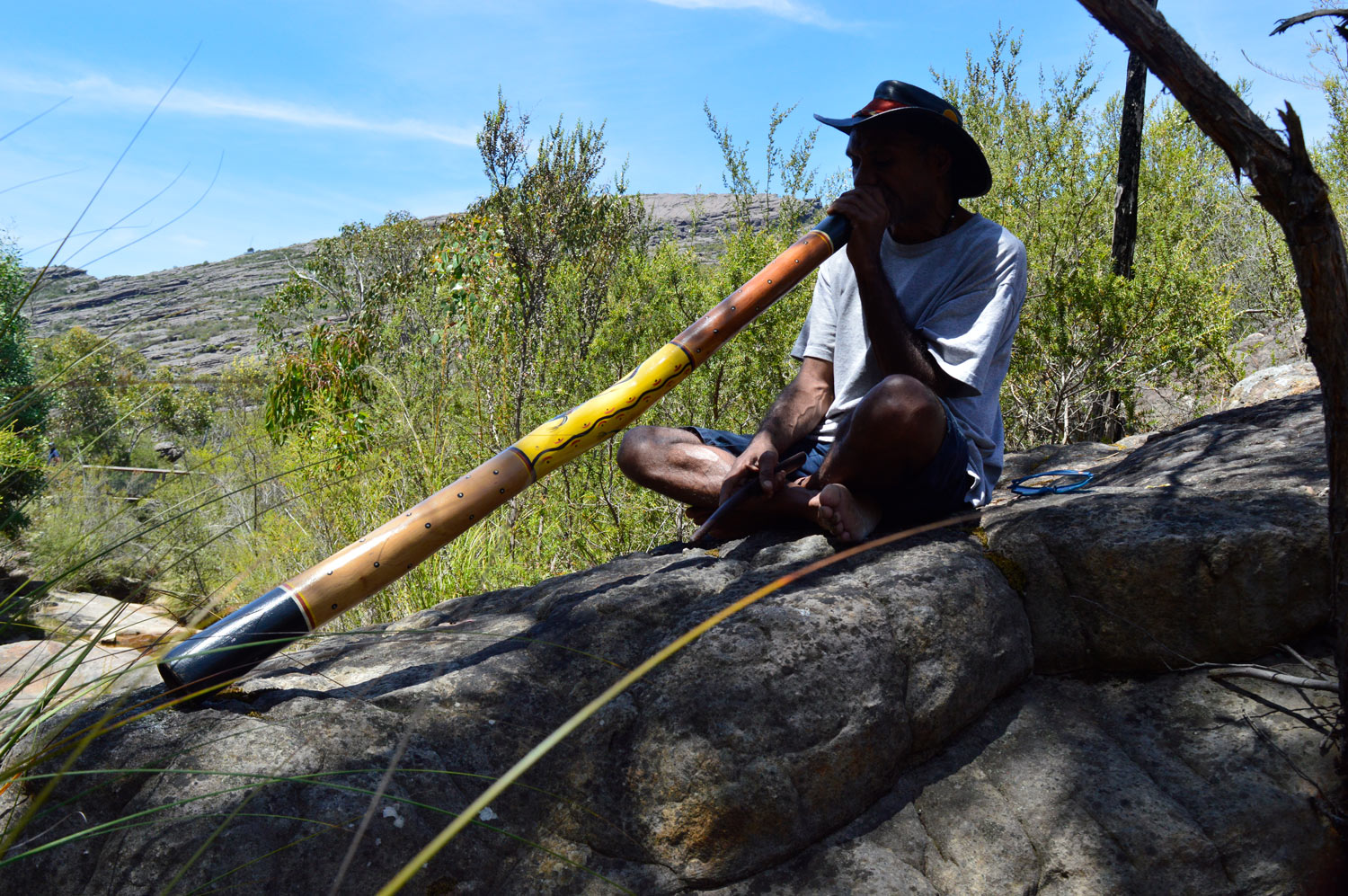
Amos Roach sits cross legged on a rock under the shade of a tree, playing the Yidaki.
“Today, we’re singing and dancing up Country, that’s connecting ourselves to the people and the land and the culture… And, we’re doing it here in this Gariwerd, the Grampians, it’s our most sacred, spiritual place, a lot of our stories are held here …so, we’re creating a sound scape and capturing the most strong feeling that we can. And medicine. It’s the best medicine, the land is our best medicine [especially] when it’s done with ceremony and culture, song and dance.”
Amos gave us permission to record and share his Yidaki/Didgeridoo meditation. He recommends lying on the floor and playing it loudly through speakers to simulate the vibrations of the Yidaki. If that’s not possible right now, grab some good headphones and plug in for a half hour meditation.
Yidaki Meditation
Background: Black volcanic rock rises from the ground and contrasts with the clear blue sky above. Images and footage by Kat Clarke. Soundscape engineered by Dylan Clarke.
From a small factory on Wurundjeri Country, in the western suburbs of Naarm, the rich smell of roasting cacao greets you before you can even identify the building. Just follow the aroma.
Inside, owner Fipe Preuss is roasting cacao purchased from farmers in Samoa. Fipe reveals the deep spiritual connections between the people and the environment.
“For myself deep healing comes from our natural resources, gifts from Tagaloa. Papa providing us healing foods and medicinal plants that support our bodies and minds and our ocean, our waterways a natural way to lift and cleanse energy.”
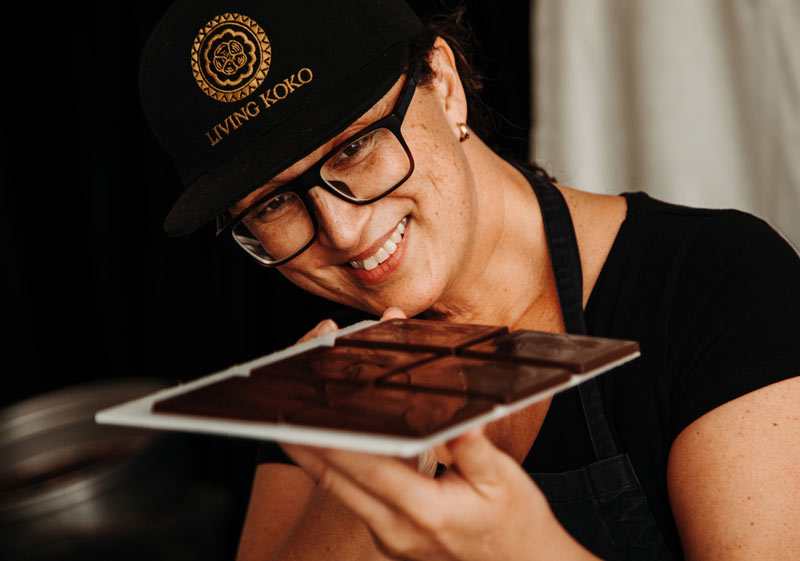
Fipe inspecting the freshly made chocolate
The indigenous farming practices that have supported thousands of years of food cultivation in the Pacific Islands embody the holistic & relational concept of the Vã. The Vã – the space in-between spaces, the relational space between people, things and cosmos. While connecting deeper with Samoan cacao farmers it is with pride that we witness their abilities to read natural resources, gravitational messages via the cosmos and then their understanding on the important relationships between their crops and their community.

Cacao hanging from the branch, shaded by leaves
In Samoa when you are served a cup of Koko Samoa (drinking cacao) it is time for a social ceremony. As the Koko opens up heart capillaries, improves the function of our blood vessels, reduces insulin resistance and reduces our blood pressure, it allows us to Talanoa (deep conversation). We accept and appreciate the deep conversations, there is a removal of transactional ways and a respectful clarity and reciprocity grows.
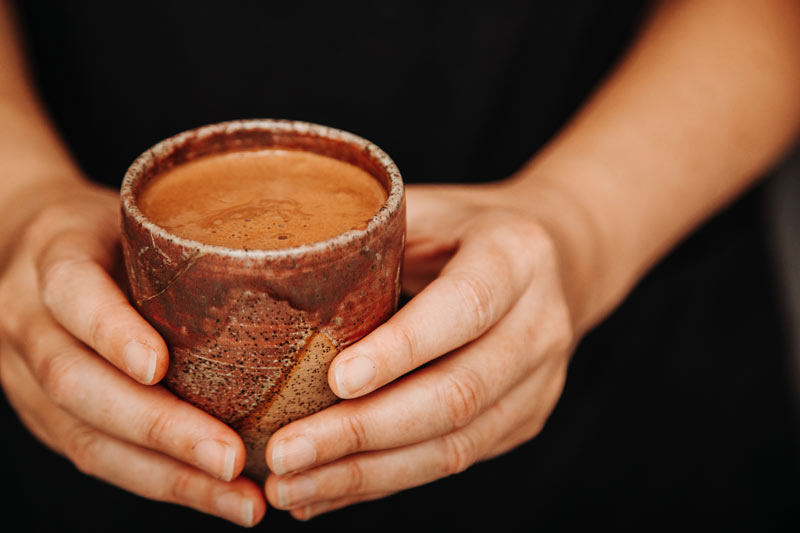
Hands holding a cup of Samoa Koko (drinking cacao)
Fipe has written about cacao farming and her relationship to place.
Background: Hands holding roasted cacao seeds, pulled from a large sack. All images of Living Koko by Gracie Sietu, Fiaifa Art Photography.
Ko Horouta te waka
Ko Manawaru te maunga
Ko Te Arai te awa
Ko Ngati Kaipoho te hapu
Ko Rongowhakaata te iwi
Hineani Tunoa Roberts is a media artist living on the lands of the Wurundjeri, born on the lands of the Eora Nation.
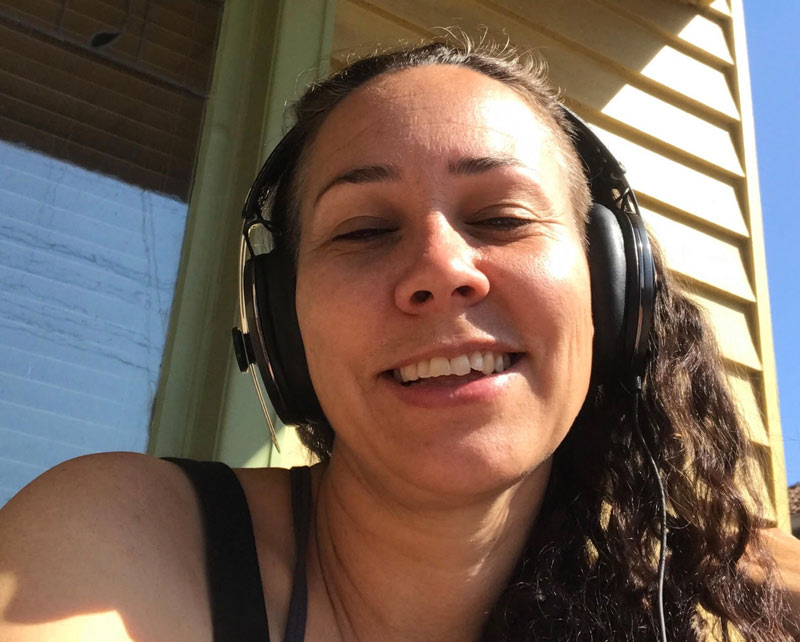
Hineani Tunoa Roberts, wearing headphones and smiling.
“Our medicine, our healing comes from the land and from the ocean, it was taught to me by our ancestors, by Papatūānuku (earth), Tangaroa (ocean), and sung into our whakapapa (ancestral lineage) with waiata (songs) with reo (language). Drawn into our skin as tāmoko, woven into our clothes as taniko, danced into us as haka, carved into our whare as whakairo. It is our tāonga, a gift to kaitiaki (caretake) and to pass onto the next generation.“
“Raised by a white settler Australian mother and a Māori father, what does it mean to be both; the colonised and the coloniser? How do we find solutions to healing cultural dysphoria in a ‘post’ colonial world, while reconciling our own family histories?”
“We can heal and step into the future when our past has been acknowledged.
Truth telling helps to restore the balance that was lost via colonisation.
How can Papatūānuku heal without the healing of our people(s) and the truth of our stories told?”
Hineani’s work aims to create conversations around how First Nations people might find healing and solutions to decolonisation through telling their own stories of family, disconnection and connection.
Watch and listen to her work below
or read a transcription.
Background: Frankston Beach. Image by Jeremy Nikora.
EXPLORE THE FIVE PILLARS
Symbolism by Mandi Barton.
